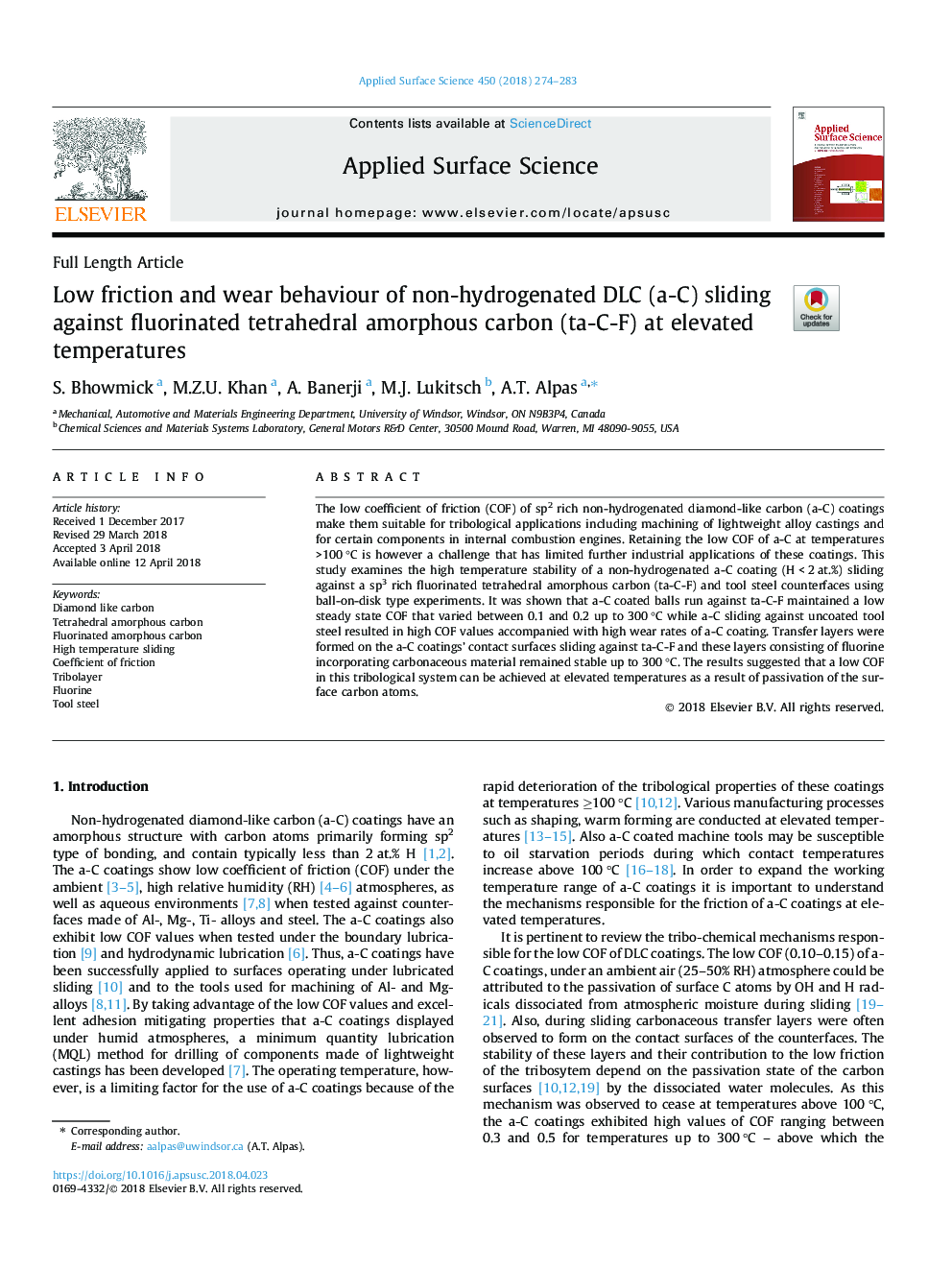| Article ID | Journal | Published Year | Pages | File Type |
|---|---|---|---|---|
| 7833562 | Applied Surface Science | 2018 | 10 Pages |
Abstract
The low coefficient of friction (COF) of sp2 rich non-hydrogenated diamond-like carbon (a-C) coatings make them suitable for tribological applications including machining of lightweight alloy castings and for certain components in internal combustion engines. Retaining the low COF of a-C at temperatures >100â¯Â°C is however a challenge that has limited further industrial applications of these coatings. This study examines the high temperature stability of a non-hydrogenated a-C coating (Hâ¯<â¯2â¯at.%) sliding against a sp3 rich fluorinated tetrahedral amorphous carbon (ta-C-F) and tool steel counterfaces using ball-on-disk type experiments. It was shown that a-C coated balls run against ta-C-F maintained a low steady state COF that varied between 0.1 and 0.2 up to 300â¯Â°C while a-C sliding against uncoated tool steel resulted in high COF values accompanied with high wear rates of a-C coating. Transfer layers were formed on the a-C coatings' contact surfaces sliding against ta-C-F and these layers consisting of fluorine incorporating carbonaceous material remained stable up to 300â¯Â°C. The results suggested that a low COF in this tribological system can be achieved at elevated temperatures as a result of passivation of the surface carbon atoms.
Keywords
Related Topics
Physical Sciences and Engineering
Chemistry
Physical and Theoretical Chemistry
Authors
S. Bhowmick, M.Z.U. Khan, A. Banerji, M.J. Lukitsch, A.T. Alpas,
